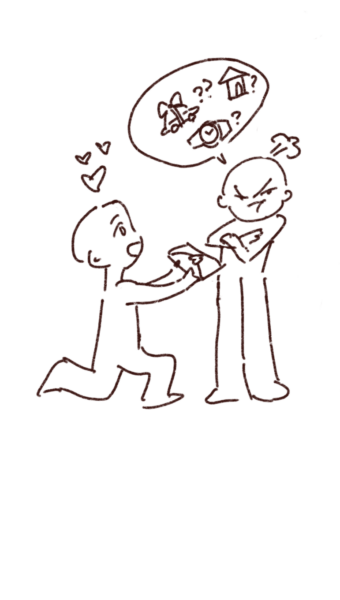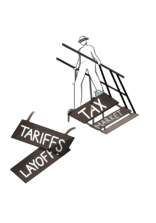
In 2024, the National Retail Foundation estimated that consumers spent over $14.2 billion for their significant others on Valentine’s Day, making it the third priciest holiday in the U.S. Meanwhile, comments such as, “is the fifth floor high enough?” or “there’s a romantic attraction between my mouth and a shotgun right now” litter couples’ posts on social media every Feb. 14. For a holiday originally associated with simple paper cards up until the 19th century, Valentine’s Day and its romantic themes have undoubtedly been watered down by corporate commercialization and the toxic standards social media sets for relationships.
Valentine’s Day gets its name from a saint and martyr executed by emperor Claudius II with the same name. Handmade paper cards sent between lovers inspired by Saint Valentine’s farewell letter before execution signed “Your Valentine” then rose to become the tokens du jour of the holiday; yet nowadays, mass-produced Hallmark cards and big, flashy gifts come to mind at the thought of Valentine’s Day.

“So many people value gifts by their cost … there are people out there who won’t appreciate your gift unless it’s expensive,” said sophomore Baron Zhang. “I personally love handmade gifts … [because] it’s truly a show of affection. People have really started to get the wrong thought [about] why gifts are important.”
With the average consumer spending over $185 on Valentine’s Day in 2024, almost $8 more than the average in the past five years, the pressure to keep up with rising spending expectations has come to impact many.
“I always like to give [my mother] a little letter explaining what I appreciate about her, and little treats,” said sophomore Ramon Luna. “[But] one time I felt a lot of pressure to buy this really big Squishmallow and I couldn’t afford it. And I felt guilty for not being able to get it.”
This theme of “proving” love on Valentine’s Day applies also to social media, where exposure to only the positive and desirable side of relationships creates unrealistic relationship standards and breeds relationship status insecurity.
“Social media influences people to [think that] having a significant other is just something to flex to other people,” Zhang said. “A lot of people get together right before Valentine’s Day just to have someone to [spend time with], so they don’t feel left out.”
This tension can actually lead to more breakups than usual; a 2019 survey conducted by YouGov found around 10% of adults experienced a breakup on or in the days before Valentine’s Day, with another 10% reporting that they felt lonely on Valentine’s Day.
Of course, there is still meaning to be found in the small, heartfelt gestures undictated by the expectations of big corporations and online personas — not all hope is lost for the holiday about celebrating love. Acts of kindness, quality time spent with a loved one and bringing back handwritten cards are just a few ways romantics can uphold the spirit of Valentine’s Day.




